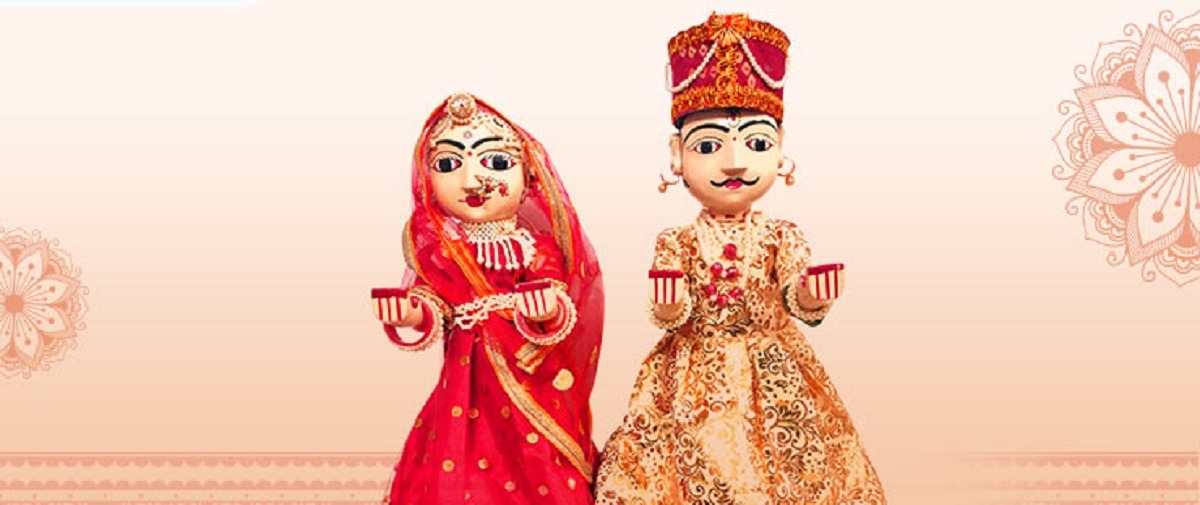
Gangaur is one of the most revered cultural festivals in Hinduism, celebrating the divine love and devotion shared between Lord Shiva and Goddess Parvati. The name Gangaur itself is derived from two words: 'Gan', which refers to Lord Shiva, and 'Gauri', another name for Goddess Parvati. This festival symbolizes the sacred bond of marriage and inspires newlyweds to embrace a life filled with love, faith, and commitment.
Married women observe this festival to pray for the long life and well-being of their husbands, while unmarried girls participate with the hope of finding their desired life partners. As per religious beliefs, performing the Gangaur Puja with full devotion brings happiness, peace, and prosperity to married life and ensures the divine blessings of gods and goddesses.
Gangaur 2025 Date in India: When is Gangaur in 2025?
According to the Hindu calendar, Gangaur is celebrated annually on the third day (Tritiya Tithi) of the Shukla Paksha of Chaitra month. In 2025, Gangaur will be observed on Monday, March 31.
Gangaur Puja 2025 Muhurat (Auspicious Timing for Worship)
The auspicious timings for Gangaur Puja in 2025 are as follows:
- Tritiya Tithi Begins – March 31, 2025, at 09:11 AM
- Tritiya Tithi Ends – April 1, 2025, at 05:42 AM
These timings are considered highly favorable for performing the Gangaur Vrat and Puja rituals.
Gangaur Vrat Vidhi (Rituals of Gangaur Vrat)
Observing the Gangaur fast (vrat) requires dedication and adherence to specific rituals. Here’s a step-by-step guide to performing the Gangaur Puja:
1. Morning Preparations
- Wake up early in the morning, take a holy bath, and wear clean traditional clothes.
- Prepare an idol of Gangaur, which includes representations of Lord Shiva and Goddess Gauri, using clay.
- Decorate the idols with colorful clothes, ornaments, and flowers.
2. Offering and Worship
- Apply kumkum, sandalwood, rice, and roli on the idols of Shiva and Gauri.
- Offer suhag (marital) items to Goddess Parvati, including bangles, sindoor, bindi, and mehendi.
- Light incense sticks and diyas, and offer fruits, sweets, and Durva grass to the deities.
3. Suhaag Jal Ritual
- Prepare a holy mixture known as Suhaag Jal by mixing silver coins, betel nut, paan, milk, curd, Ganga water, turmeric, kumkum, and Durva grass in a plate.
- Take a handful of Durva grass and sprinkle the Suhaag Jal on Lord Shiva and Goddess Gauri, seeking their blessings.
- Later, sprinkle the holy water on family members for prosperity and harmony.
4. Offering Churma (Sacred Sweet Dish)
- A special offering of Churma (a sweet dish made of wheat flour, jaggery, and ghee) is prepared and presented to Lord Shiva and Goddess Gauri as prasad.
5. Community Celebrations
- In many regions, women gather in groups, perform traditional songs and dances, and participate in grand processions carrying beautifully decorated idols of Gangaur Mata.
Significance of Gangaur Vrat
Gangaur is a festival that holds deep spiritual and cultural significance, especially in the northern states of India, including Rajasthan, Uttar Pradesh, and Madhya Pradesh. This festival not only celebrates the divine love of Shiva and Parvati but also reinforces the sacred bond between husband and wife.
1. Symbol of Marital Bliss
Married women observe this fast with unwavering devotion to ensure a long and happy married life. It is believed that by worshiping Gauri-Shankar, women receive divine blessings that strengthen their relationship with their spouse.
2. Hope for a Suitable Groom
Unmarried girls also take part in Gangaur vrat and puja with the hope of getting an ideal life partner, just like Goddess Parvati found her perfect match in Lord Shiva after rigorous penance.
3. Cultural Celebrations and Folk Traditions
Gangaur is celebrated with great enthusiasm and grandeur, particularly in Rajasthan, where traditional folk dances, songs, and processions take place. The festival reflects themes of love, devotion, and commitment, often portrayed through performances that depict the divine relationships of:
- Shiva & Parvati
- Brahma & Savitri
- Vishnu & Lakshmi
These performances bring communities together, showcasing the rich cultural heritage associated with Gangaur.

 Share
Share






